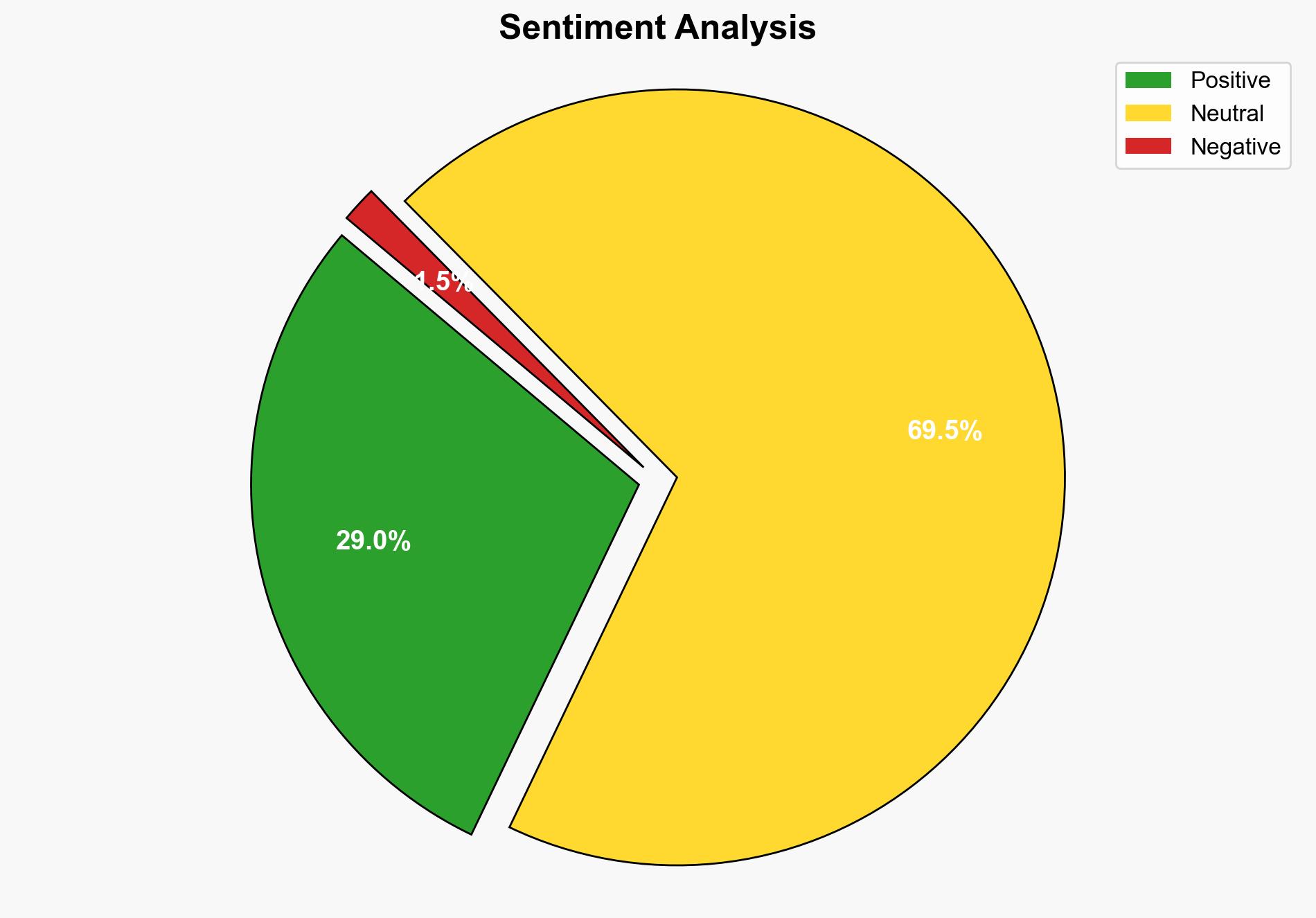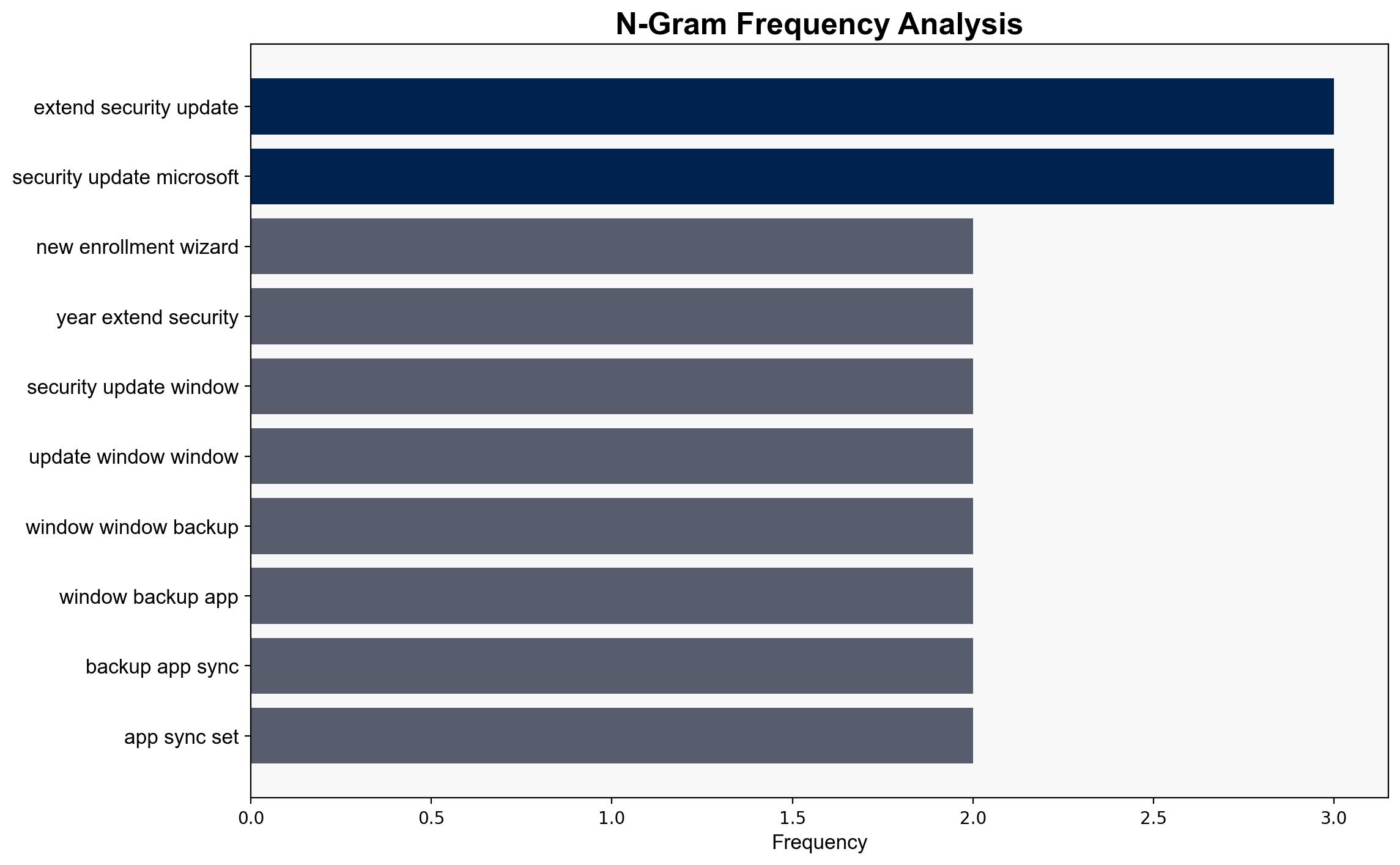Consumers and Organizations Can Now Enroll PCs in Extended Security Updates for Windows 10 – Thurrott.com
Published on: 2025-06-24
Intelligence Report: Consumers and Organizations Can Now Enroll PCs in Extended Security Updates for Windows 10 – Thurrott.com
1. BLUF (Bottom Line Up Front)
Microsoft has initiated a program allowing consumers and organizations to enroll Windows 10 PCs in an Extended Security Updates (ESU) program. This move aims to provide continued security support beyond the official end-of-support date in October. The program includes a new enrollment wizard and offers a free year of updates for individuals through specific channels. This development is crucial for maintaining cybersecurity resilience in systems that cannot immediately transition to newer operating systems.
2. Detailed Analysis
The following structured analytic techniques have been applied to ensure methodological consistency:
Adversarial Threat Simulation
The extension of security updates reduces the attack surface for cyber adversaries targeting outdated systems. By simulating potential adversary actions, organizations can better prepare for and mitigate vulnerabilities that may arise from unsupported software.
Indicators Development
The introduction of the ESU program provides an opportunity to develop indicators for monitoring compliance and detecting anomalies in update deployment. This can enhance early threat detection and response capabilities.
Bayesian Scenario Modeling
Using Bayesian models, organizations can predict potential cyberattack pathways and evaluate the likelihood of different threat scenarios, thereby informing strategic decisions regarding system upgrades and security investments.
3. Implications and Strategic Risks
The continued support for Windows 10 through the ESU program mitigates immediate cybersecurity risks associated with unsupported systems. However, reliance on extended updates may delay necessary upgrades to more secure, modern operating systems. This could lead to increased long-term vulnerability and potential exploitation by cyber adversaries. Additionally, organizations must weigh the economic implications of ongoing ESU costs against the benefits of transitioning to newer systems.
4. Recommendations and Outlook
- Organizations should assess their current Windows 10 deployments and prioritize systems for upgrade based on criticality and exposure to threats.
- Implement a phased approach to transition to newer operating systems, leveraging the ESU program as a temporary measure.
- Scenario-based projections suggest that in the best case, organizations will use the ESU period to strategically plan upgrades, while the worst case involves complacency leading to increased vulnerability over time.
5. Key Individuals and Entities
Yusuf Mehdi
6. Thematic Tags
cybersecurity, software updates, risk management, strategic planning




